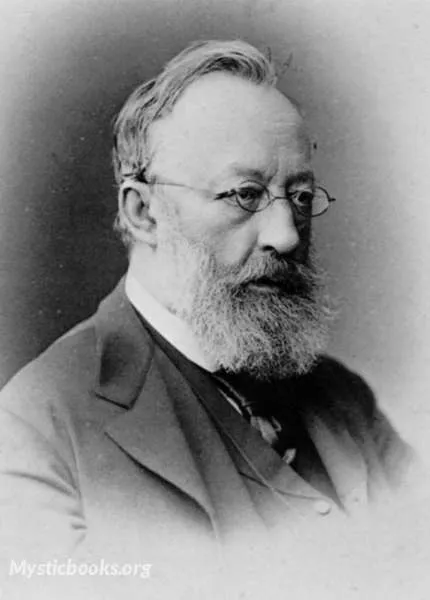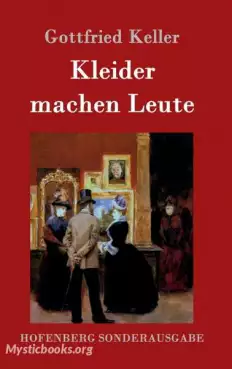
Timeline
Title
Country/Nationality
Gottfried Keller
Gottfried Keller was a Swiss poet and writer of German literature. Best known for his novel Green Henry (German: Der grüne Heinrich) and his cycle of novellas called The People from Seldwyla (Die Leute von Seldwyla), he became one of the most popular narrators of literary realism in the late 19th century.
His father was Rudolf Keller, a lathe-worker from Glattfelden; his mother was a woman named Elisabeth Scheuchzer (1787–1864). The couple had six children, four of whom died, meaning Keller only had his sister Regula (*1822) left. After his father died of tuberculosis, Keller's family lived in constant poverty, and, because of Keller's difficulties with his teachers, in continual disagreement with school authorities. Keller later gave a good rendering of his experiences in this period in his long novel, Der grüne Heinrich (1850–55; 2nd version, 1879). His mother seems to have brought him up in as carefree a condition as possible, sparing for him from her scanty meals, and allowing him the greatest possible liberty in the disposition of his time, the choice of a calling, etc. With some changes, a treatment of her relations to him may be found in his short story, “Frau Regel Amrain und ihr jüngster” (in the collection Die Leute von Seldwyla).
Keller's first true passion was painting. Expelled in a political mix-up from the Industrieschule in Zürich, he became an apprentice in 1834 to the landscape painter Steiger and in 1837 to the watercolourist Rudolf Meyer (1803–1857). In 1840, he went to Munich (Bavaria) to study art for a time at the Royal Academy of Fine Arts.
Keller returned to Zürich in 1842 and, although possessing artistic talent, took up writing. He published his first poems, Gedichte, in 1846. Jacob Wittmer Hartmann characterizes these six years at Zürich (1842–48) as a time of almost total inactivity, when Keller inclined strongly toward radicalism in politics, and was also subject to much temptation and indulged himself. From 1848 to 1850 he studied at the University of Heidelberg. There he came under the influence of the philosopher Feuerbach, and extended his radicalism also to matters of religion.
From 1850 to 1856, he worked in Berlin. Hartmann claims it was chiefly this stay in Berlin which molded Keller's character into its final shape, toned down his rather bitter pessimism to a more moderate form, and prepared him (not without the privations of hunger), in the whirl of a large city, for an enjoyment of the more restricted pleasures of his native Zürich. It was in Berlin that he turned definitely away from other pursuits and took up literature as a career.
Keller returned again to Zürich and became the First Official Secretary of the Canton of Zürich (Erster Zürcher Staatsschreiber) in 1861. The routine duties of this position were a sort of fixed point about which his artistic activities could revolve, but Hartmann opines that he produced little of permanent value in these years. In 1872, Keller published Seven Legends (Sieben Legenden), which dealt with the early Christian era. After 15 years at this post, he was retired in 1876, and began a period of literary activity that was to last to his death, living the life of an old bachelor with his sister Regula as his housekeeper. In spite of his often unsympathetic manner, his extreme reserve and idiosyncrasy in dealing with others, he had gained the affection of his fellow townspeople and an almost universal reputation before his death.
Books by Gottfried Keller

Kleider machen Leute
Die Erzählung “Kleider machen Leute” erschien 1874 im zweiten Band des Novellenzyklus “Die Leute von Seldwyla”. Ein arbeitsloser Schneidergeselle darf unterwegs in einer vornehmen Kutsche Platz nehmen. Der im kleinen Orte Goldach dem herrschaftlichen...

Auswahl aus Die Leute von Seldwyla
This collection of novellas by Gottfried Keller follows the lives of diverse individuals in the fictional Swiss village of Seldwyla. Through sharp wit and satirical observations, Keller explores themes of social class, individual identity, and the in...

Grüne Heinrich (zweite Fassung)
Der Grüne Heinrich ist ein tiefgründiger Bildungsroman, der die Entwicklung des jungen Heinrich Lee, einem talentierten, aber unsteten Künstler, von der Jugend bis zum Erwachsenenalter verfolgt. Der Roman beleuchtet seine künstlerischen und persönlic...

Erzählungen aus 'Die Leute von Seldwyla'
The People of Seldwyla is a collection of ten stories set in the fictional Swiss town of Seldwyla. This collection includes six of the ten novellas. The stories are full of wit and satire, and they offer a sharp critique of Swiss society. Keller's wr...

Spiegel, das Kätzchen
A cat named Spiegel makes a pact with the town's witch to save himself from starvation. The witch agrees to feed Spiegel in exchange for his fat, which she needs for her magic. However, Spiegel is clever and outsmarts the witch, leaving her with a te...

Schmied seines Glückes
Die Novelle handelt von Johannes Kabis, der sich selbst John Kabys nennt, weil dies fremdartiger und glückhafter klingt. Er ist der Meinung, dass der rechte Mann ruhig, mit nur wenigen Meisterschlägen sein Glück zu schmieden habe. Das scheint ihm sel...

drei gerechten Kammmacher
In Gottfried Keller's novella "Die drei gerechten Kammmacher", three skilled craftsmen are driven by ambition and desire. They work for the same master, share a dream of owning their own comb-making business, and are all smitten with the same wealthy...

Dietegen
Dietegen, a young orphan boy, faces injustice and prejudice in the divided town of Seldwyla, where the cheerful Seldwyler are constantly at odds with the strict and suspicious Ruechensteiners. Despite a close bond with Küngolt, the daughter of the Se...

mißbrauchten Liebesbriefe
In Gottfried Keller's humorous novella, 'Missbrauchten Liebesbriefe', we encounter Viggi, a businessman yearning for literary recognition. Driven by ambition, he orchestrates a scheme to create a collection of love letters with his wife, Gritli. Howe...